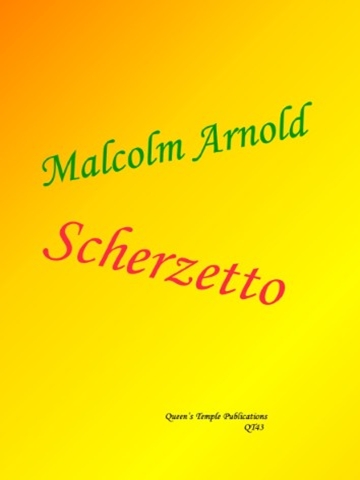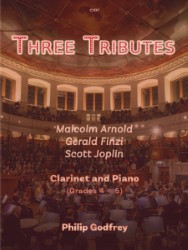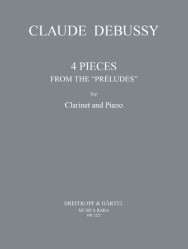Scherzetto

Composer: Arnold, Sir Malcolm
Instrumentation: Clarinet, Piano
Publisher:
| Product Code: | 979-0-708-01543-7 |
| ISMN: | 979-0-708-01543-7 |
| Publishers Number: | QT43 |
| Published date:: | 2001 |
| Language: | English |
| Page count: | 4 |
| Condition: | New |
Malcolm Arnold's Scherzetto is an important work originally written as part of Sir Malcolm's film music for the 1953 film 'You Know What Sailors Are',…
It stands out as a brilliant example of musical ingenuity, bridging the gap between film scoring and classical chamber music.
Originally conceived for the 1953 film You Know What Sailors Are, the piece has since taken on a life of its own as a concert work for clarinet and piano.
Arnold’s ability to re-purpose cinematic material into a concise, expressive duet highlights his remarkable storytelling prowess. With its lively rhythms and playful motifs, “Scherzetto” captures an infectious exuberance, inviting audiences to experience a spirited dialogue woven into every note.
The work’s bright harmonies and vibrant character draw the listener into a narrative world, showcasing Arnold’s distinctive voice in both concert and film music.
The work unfolds as a delightful conversation between clarinet and piano, where each instrument alternates between leading and supporting roles.
The clarinet’s fluid lines meet the piano’s crisp, dynamic interjections, creating an interplay that is both spontaneous and highly refined. Arnold employs rapid exchanges and unexpected rhythmic twists that evoke the informal chatter of friends engaged in playful banter.
This dialogue is not merely a virtuosic display; it is a carefully crafted narrative balancing technical precision with an irresistible sense of humor.
Its concise form yet rich textures invite skilled performers to inject personal expression, enhancing the delightful conversation between the two instruments.
In its composition, the “Scherzetto” reflects Arnold’s characteristic blend of classical structure and cinematic flair. Drawing on the traditional form of the scherzo, the piece moves with a buoyant tempo and uses unexpected pauses to heighten its dramatic effect.
Jazz-like inflections and quirky accents add layers of complexity, inviting performers to explore interpretative creativity. This synthesis transforms a simple musical form into an engaging statement of artistic versatility.
Arnold’s masterful handling of melody and rhythm allows the work to flourish, creating a sonic landscape that is both vivid and playful, yet surprisingly deep.
Every note is meticulously placed, inviting both performers and audiences to discover subtle emotional layers hidden beneath its spirited exterior, making the short piece profoundly memorable.
Critics and audiences have embraced the “Scherzetto” for its unique ability to encapsulate both elegance and playful spirit within a compact framework. Its brevity allows every motif to shine, ensuring that no single note is wasted.
Live performances often reveal the work’s convivial nature, as the dialogue between clarinet and piano infuses the concert with an atmosphere of lighthearted celebration.
The piece serves as a refreshing counterpoint to more solemn repertoire, inviting listeners to enjoy music that is simultaneously technical and accessible.
Its enduring charm lies in its capacity to evoke smiles while challenging musicians with its intricate interplay. The performance of this piece often transforms a standard concert into an intimate, joyful experience, resonating long after the final note.
In conclusion, Malcolm Arnold’s “Scherzetto” is a vibrant, enduring work that marries the spontaneity of film music with classical elegance.
Its engaging dialogue between clarinet and piano invites both performers and listeners into a lively narrative, where humor and technical skill coexist effortlessly.
The compact form of the piece belies its depth, as each carefully crafted motif contributes to an overall atmosphere of joy and refined storytelling.
Whether encountered in a concert setting or revisited by seasoned aficionados, the work serves as a reminder of music’s unique ability to capture fleeting moments of delight.
Arnold’s creation remains a testament to his artistic vision and lasting influence in the world of music, and it continues to inspire new generations of musicians worldwide.
R.R.P £5.50
Our Price: £4.68
Digital Download – PDF
Shipping costs: No shipping
You might also like
-
20 Crucial Clarinet Studies
£5.91 -
3 Tributes for Clarinet and Piano
£8.46 -
4 Pieces from the Préludes
£16.00 -
6 Bagatelles
£16.00




